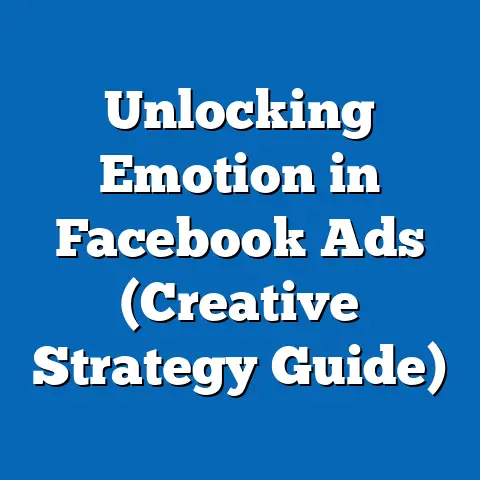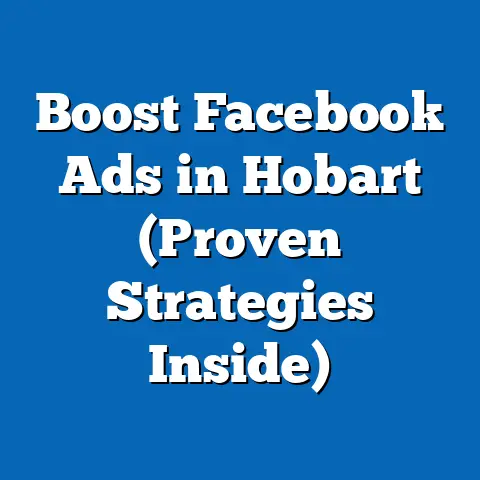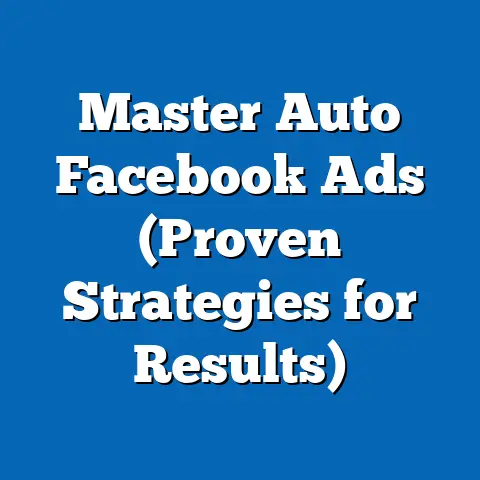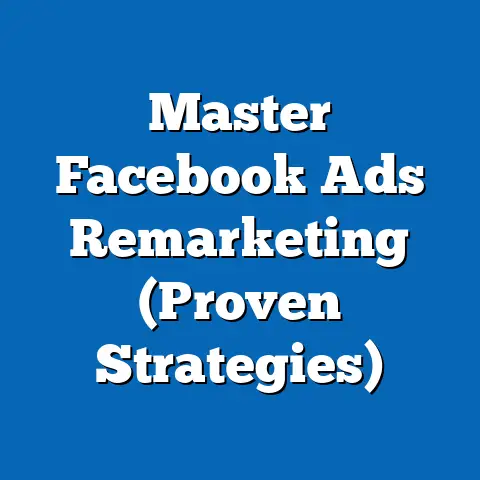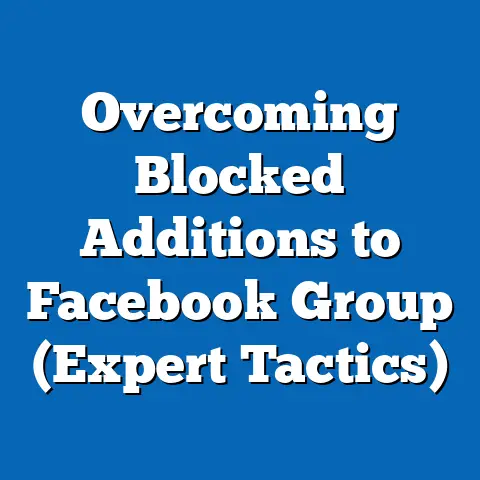Crafting High-Impact Facebook Ads for Bassett (Pro Tips)
Crafting High-Impact Facebook Ads for Bassett: Pro Tips
Imagine this: the leaves are turning a vibrant crimson and gold outside, a gentle breeze rustles through the trees, and there’s a slight chill in the air. It’s the perfect autumn day, and people are thinking about cozying up their homes for the season. Or perhaps, the sun is shining brightly, birds are singing, and everyone’s feeling refreshed and ready for a change. The season’s transforming, and so should your Facebook ad strategy!
Just like we adjust our wardrobes and routines to match the weather, businesses need to adapt their advertising to stay relevant and impactful. And that’s what this guide is all about – crafting Facebook ads that not only capture attention but also convert that attention into loyal Bassett customers.
Understanding the Bassett Brand
Bassett isn’t just another furniture company; it’s a brand steeped in history and tradition. Founded in 1902, it has grown from a family-owned business into a well-recognized name synonymous with quality and style. Bassett’s mission is to provide stylish, comfortable, and affordable furniture that helps people create the homes of their dreams.
What makes Bassett unique? It’s their commitment to craftsmanship, attention to detail, and a wide range of styles, from classic to contemporary. Their values revolve around quality, customer satisfaction, and creating pieces that last. This unique identity needs to shine through in every Facebook ad you create.
When crafting ads for Bassett, it’s crucial to understand their target audience. Generally, it includes homeowners, apartment dwellers, and interior design enthusiasts who value quality, style, and affordability. These individuals are typically active on social media, seeking inspiration for their living spaces and looking for deals on furniture. Your ads should speak directly to their needs and desires, showcasing how Bassett can help them transform their homes.
Takeaway: Before you even think about creating an ad, deeply understand Bassett’s brand, its values, and its target audience. This knowledge will inform every aspect of your ad strategy.
Setting Clear Objectives
Before you start throwing money at Facebook ads, you need to know what you want to achieve. Are you looking to increase brand awareness, generate leads, drive engagement, or boost sales conversions? Setting clear, measurable objectives is the foundation of a successful Facebook ad campaign.
- Brand Awareness: If your goal is to get Bassett’s name out there, focus on reaching a broad audience and showcasing the brand’s unique story and values.
- Lead Generation: If you want to collect leads, offer a valuable incentive, such as a free design consultation or a discount on their first purchase, in exchange for contact information.
- Engagement: If you’re aiming for engagement, create ads that encourage interaction, such as asking questions, running polls, or hosting contests related to home decor.
- Sales Conversions: If your primary goal is to drive sales, focus on showcasing specific products with compelling visuals and clear calls-to-action that lead directly to the Bassett website or store.
Let’s say Bassett wants to promote their new line of outdoor furniture for the summer. A clear objective could be: “Increase sales of outdoor furniture by 20% within the next month through Facebook ads.” This specific goal will dictate the ad content, targeting, and overall strategy.
Takeaway: Align your advertising efforts with your business goals. Without clear objectives, your Facebook ads will lack direction and it will be difficult to measure success.
Crafting Compelling Visuals
Visuals are the first thing people see when scrolling through their Facebook feeds. In fact, studies show that visuals are processed 60,000 times faster in the brain than text. So, if your visuals aren’t captivating, your ad might as well not exist.
Effective imagery for Bassett should include:
- High-Quality Images: Use professionally shot images of Bassett’s furniture that showcase their features, craftsmanship, and style. Avoid blurry or low-resolution images.
- Color Schemes: Choose color schemes that align with Bassett’s brand and evoke the desired emotions. Warm, inviting colors can create a sense of comfort, while cool, modern colors can convey sophistication.
- Composition: Pay attention to the composition of your images. Use the rule of thirds, leading lines, and other design principles to create visually appealing and balanced shots.
- Branding: Incorporate Bassett’s logo and brand elements into your visuals, but don’t overdo it. The goal is to reinforce brand recognition without distracting from the furniture.
Here are some creative ways to incorporate lifestyle shots and user-generated content:
- Lifestyle Shots: Show Bassett’s furniture in real-life settings, such as a cozy living room or a stylish dining area. This helps potential customers envision how the furniture would look in their own homes.
- User-Generated Content (UGC): Encourage customers to share photos of their Bassett furniture on social media using a specific hashtag. Then, feature these photos in your Facebook ads to build trust and authenticity.
For instance, an ad promoting Bassett’s new sectional sofa could feature a high-quality image of the sofa in a beautifully decorated living room, with a family enjoying a movie night. The caption could read: “Create unforgettable memories with the Bassett sectional sofa. Shop now and transform your living room into the ultimate family hangout.”
Takeaway: Invest in high-quality visuals that capture attention and showcase Bassett’s furniture in the best possible light. Use lifestyle shots and user-generated content to enhance relatability and appeal.
Writing Persuasive Copy
While visuals grab attention, it’s the ad copy that seals the deal. Persuasive copy speaks directly to Bassett’s audience, highlighting their pain points and showcasing the benefits of Bassett’s products.
Here are some strategies for crafting impactful ad copy:
- Headlines: Write headlines that are attention-grabbing, concise, and relevant to the target audience. Use power words, such as “Transform,” “Discover,” and “Create,” to evoke emotions and drive action.
- Body Text: Use a conversational tone that reflects Bassett’s brand voice. Highlight customer pain points and showcase how Bassett’s furniture can solve those problems. Focus on the benefits, not just the features.
- Calls-to-Action (CTAs): Use strong, clear CTAs that tell people exactly what you want them to do. Examples include “Shop Now,” “Learn More,” “Get a Free Quote,” and “Visit Our Store.”
Techniques for highlighting customer pain points:
- Identify Common Problems: Research common problems that Bassett’s target audience faces when furnishing their homes, such as lack of space, uncomfortable furniture, or outdated decor.
- Address the Pain Points Directly: Use your ad copy to address these pain points directly. For example, “Tired of uncomfortable sofas? Bassett’s handcrafted sofas provide the ultimate in comfort and support.”
- Showcase the Benefits: Highlight the benefits of Bassett’s furniture that solve these problems. For example, “Bassett’s space-saving designs maximize your living space without sacrificing style or comfort.”
Let’s say Bassett wants to promote their new line of mattresses. An effective ad copy could read:
- Headline: “Finally, a Mattress That Guarantees a Perfect Night’s Sleep!”
- Body Text: “Are you tired of tossing and turning all night? Bassett’s new line of mattresses is designed with cutting-edge technology to provide the ultimate in comfort and support. Say goodbye to sleepless nights and wake up feeling refreshed and energized.”
- CTA: “Shop Now and Experience the Difference!”
Takeaway: Write persuasive ad copy that speaks directly to Bassett’s audience, highlighting their pain points and showcasing the benefits of Bassett’s furniture. Use strong, clear CTAs that drive action.
Targeting the Right Audience
You can have the most visually stunning ad with the most persuasive copy, but if you’re showing it to the wrong people, it’s all for naught. Facebook’s targeting capabilities allow you to reach your ideal customer base with laser precision.
Here’s a breakdown of the targeting options:
- Demographic Targeting: Target people based on age, gender, location, education, and other demographic factors. For Bassett, you might target homeowners aged 25-55 in specific geographic areas.
- Interest-Based Targeting: Target people based on their interests and hobbies, such as home decor, interior design, furniture, and DIY projects.
- Behavioral Targeting: Target people based on their online behavior, such as purchase history, website visits, and engagement with similar brands.
Creating custom audiences, lookalike audiences, and retargeting strategies:
- Custom Audiences: Create custom audiences by uploading a list of existing customers or website visitors. This allows you to target people who are already familiar with Bassett.
- Lookalike Audiences: Create lookalike audiences based on your custom audiences. This allows you to reach new people who share similar characteristics and interests as your existing customers.
- Retargeting: Retarget people who have visited Bassett’s website or interacted with their Facebook page but haven’t made a purchase. Show them ads featuring the products they viewed or the offers they considered.
Analyzing audience insights:
- Facebook Audience Insights: Use Facebook Audience Insights to learn more about your target audience, including their demographics, interests, and behaviors. This information can help you refine your targeting and improve ad performance.
- A/B Testing: A/B test different targeting options to see which ones perform best. Experiment with different demographics, interests, and behaviors to find the sweet spot.
For example, Bassett could create a custom audience of people who have visited their website in the past 30 days and show them ads featuring their best-selling furniture. They could also create a lookalike audience based on this custom audience to reach new people who are likely to be interested in Bassett’s products.
Takeaway: Leverage Facebook’s targeting capabilities to reach your ideal customer base with precision. Create custom audiences, lookalike audiences, and retargeting strategies to maximize your reach and engagement.
Analyzing and Optimizing Campaigns
Your work isn’t done when you launch your ads. In fact, that’s just the beginning. Data analysis and campaign optimization are crucial for maximizing ROI and achieving your advertising goals.
Key performance indicators (KPIs) that Bassett should monitor:
- Click-Through Rate (CTR): The percentage of people who click on your ad after seeing it. A high CTR indicates that your ad is relevant and engaging.
- Conversion Rate: The percentage of people who take the desired action after clicking on your ad, such as making a purchase or filling out a form.
- Return on Ad Spend (ROAS): The amount of revenue you generate for every dollar you spend on advertising. A high ROAS indicates that your ad campaign is profitable.
- Cost Per Acquisition (CPA): The cost of acquiring a new customer through your ad campaign. A low CPA indicates that your ad campaign is efficient.
Pro tips on using A/B testing to refine ad creatives and targeting strategies:
- Test Different Headlines: Experiment with different headlines to see which ones generate the most clicks.
- Test Different Visuals: Test different images and videos to see which ones resonate best with your target audience.
- Test Different CTAs: Experiment with different calls-to-action to see which ones drive the most conversions.
- Test Different Targeting Options: A/B test different demographics, interests, and behaviors to see which ones perform best.
Continuous learning and adaptation:
- Stay Up-to-Date: Stay up-to-date on the latest Facebook advertising trends and best practices. Facebook is constantly evolving, so it’s important to stay informed.
- Analyze Your Data Regularly: Analyze your campaign data regularly to identify areas for improvement.
- Be Willing to Experiment: Be willing to experiment with new strategies and tactics. Don’t be afraid to try new things to see what works best for your business.
For example, Bassett could A/B test two different headlines for their ad promoting their new line of sofas: “Transform Your Living Room with Bassett’s New Sofas” vs. “Get the Best Comfort and Style with Bassett’s New Sofas.” By tracking the CTR and conversion rates of each headline, they can determine which one is more effective and use that headline in their future ads.
Takeaway: Monitor your KPIs, use A/B testing to refine your ad creatives and targeting strategies, and be willing to adapt based on campaign performance. Continuous learning and optimization are essential for maximizing ROI.
Conclusion
Crafting high-impact Facebook ads tailored for Bassett requires a blend of creativity, strategy, and data analysis. By understanding the Bassett brand, setting clear objectives, creating compelling visuals, writing persuasive copy, targeting the right audience, and analyzing and optimizing campaigns, you can create Facebook ads that resonate with potential customers and drive results.
Embrace creativity and strategy in your advertising efforts, and remember that the right approach can lead to increased brand visibility, customer loyalty, and ultimately, transform business outcomes. So, go out there, create some amazing Facebook ads, and watch your business thrive!

